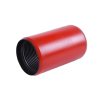- Afrikaans
- Albanian
- Amharic
- Arabic
- Armenian
- Azerbaijani
- Basque
- Belarusian
- Bengali
- Bosnian
- Bulgarian
- Catalan
- Cebuano
- Corsican
- Croatian
- Czech
- Danish
- Dutch
- English
- Esperanto
- Estonian
- Finnish
- French
- Frisian
- Galician
- Georgian
- German
- Greek
- Gujarati
- Haitian Creole
- hausa
- hawaiian
- Hebrew
- Hindi
- Miao
- Hungarian
- Icelandic
- igbo
- Indonesian
- irish
- Italian
- Japanese
- Javanese
- Kannada
- kazakh
- Khmer
- Rwandese
- Korean
- Kurdish
- Kyrgyz
- Lao
- Latin
- Latvian
- Lithuanian
- Luxembourgish
- Macedonian
- Malgashi
- Malay
- Malayalam
- Maltese
- Maori
- Marathi
- Mongolian
- Myanmar
- Nepali
- Norwegian
- Norwegian
- Occitan
- Pashto
- Persian
- Polish
- Portuguese
- Punjabi
- Romanian
- Russian
- Samoan
- Scottish Gaelic
- Serbian
- Sesotho
- Shona
- Sindhi
- Sinhala
- Slovak
- Slovenian
- Somali
- Spanish
- Sundanese
- Swahili
- Swedish
- Tagalog
- Tajik
- Tamil
- Tatar
- Telugu
- Thai
- Turkish
- Turkmen
- Ukrainian
- Urdu
- Uighur
- Uzbek
- Vietnamese
- Welsh
- Bantu
- Yiddish
- Yoruba
- Zulu
threaded bull plug
The Threaded Bull Plug A Comprehensive Overview
In the world of plumbing and industrial applications, the threaded bull plug stands out as an essential component for various piping systems. Whether in residential plumbing, commercial construction, or agricultural setups, understanding the role and specifications of threaded bull plugs can significantly impact the efficiency and reliability of fluid transportation.
A threaded bull plug is a type of fitting designed to seal the end of a pipe, effectively stopping the flow of fluids. The name “bull plug” refers to its robust design, which is typically used in situations where a strong, leak-proof seal is required. The threaded aspect indicates that it has screw threads on its exterior, allowing it to be securely attached to the corresponding pipe fittings.
One of the primary uses of a threaded bull plug is in the construction of temporary systems, such as when testing pipes for leaks. During initial installation, the bull plug can be screwed into place to cap off any unused openings, making it easier to pressurize the system without the risk of leaks. This ensures that any necessary inspections can be performed efficiently and accurately.
Material selection is crucial when dealing with threaded bull plugs. Common materials include brass, stainless steel, and plastic. Brass is often favored for its durability and resistance to corrosion, making it suitable for a variety of environments. Stainless steel offers similar benefits but adds strength and is ideal for high-pressure applications. In contrast, plastic bull plugs may be used in lightweight systems or where lower pressures are involved, particularly in industries dealing with chemicals or non-corrosive fluids.
threaded bull plug

Installation of a threaded bull plug requires attention to detail. It is essential to ensure that the threads are clean and free from debris to avoid cross-threading, which can lead to leaks or bond failure. Teflon tape is often recommended to seal the threads and enhance the fit. By wrapping the tape around the threads before installation, a tighter seal can be achieved, further preventing fluid leakage.
Maintenance of threaded bull plugs primarily revolves around regular inspections to ensure that the seals remain intact and are not corroded or damaged. In extreme conditions, such as high temperatures or aggressive chemicals, monitoring becomes even more important. Replacing a worn or corroded bull plug promptly can save considerable resources by preventing larger leaks or failures in the system.
Moreover, threaded bull plugs are versatile and come in various sizes and specifications to accommodate different pipe diameters and pressure ratings. Thus, they can be employed across myriad industries, including oil and gas, water supply, HVAC systems, and more.
In conclusion, the threaded bull plug serves an indispensable function in sealing and securing pipe systems. Its robust design, combined with the ability to easily attach it to various piping configurations, makes it a favored choice among professionals. Understanding its properties, appropriate materials, and maintenance requirements can enhance the reliability of fluid systems, ensuring they operate smoothly and efficiently. Adopting best practices in installation and maintenance will ultimately contribute to the longevity and effectiveness of any piping setup.
-
Tubing Pup Joints: Essential Components for Oil and Gas OperationsNewsJul.10,2025
-
Pup Joints: Essential Components for Reliable Drilling OperationsNewsJul.10,2025
-
Pipe Couplings: Connecting Your World EfficientlyNewsJul.10,2025
-
Mastering Oilfield Operations with Quality Tubing and CasingNewsJul.10,2025
-
High-Quality Casing Couplings for Every NeedNewsJul.10,2025
-
Boost Your Drilling Efficiency with Premium Crossover Tools & Seating NipplesNewsJul.10,2025







